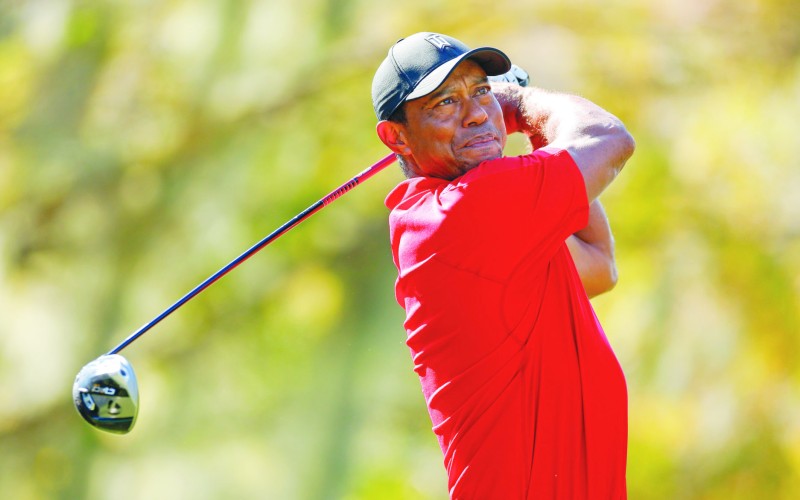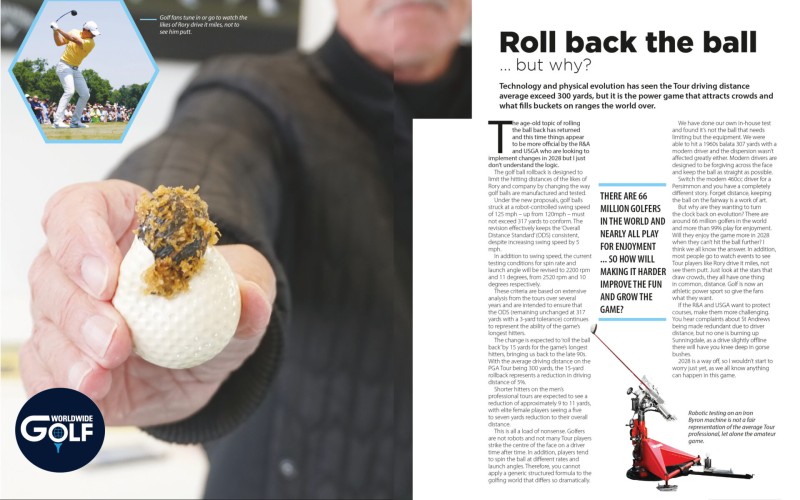Technology and physical evolution has seen the Tour driving distance average exceed 300 yards, but it is the power game that attracts crowds and what fills buckets on ranges the world over.
The age-old topic of rolling the ball back has returned and this time things appear to be more official by the R&A and USGA who are looking to implement changes in 2028 but I just don’t understand the logic. The golf ball rollback is designed to limit the hitting distances of the likes of Rory and company by changing the way golf balls are manufactured and tested.
Under the new proposals, golf balls struck at a robot-controlled swing speed of 125 mph – up from 120mph – must not exceed 317 yards to conform. The revision effectively keeps the ‘Overall Distance Standard’ (ODS) consistent, despite increasing swing speed by 5 mph.
In addition to swing speed, the current testing conditions for spin rate and launch angle will be revised to 2200 rpm and 11 degrees, from 2520 rpm and 10 degrees respectively. These criteria are based on extensive analysis from the tours over several years and are intended to ensure that the ODS (remaining unchanged at 317 yards with a 3-yard tolerance) continues to represent the ability of the game’s longest hitters.
The change is expected to ‘roll the ball back’ by 15 yards for the game’s longest hitters, bringing us back to the late 90s. With the average driving distance on the PGA Tour being 300 yards, the 15-yard rollback represents a reduction in driving distance of 5%.

Robotic testing on an Iron Byron machine is not a fair representation of the average Tour professional, let alone the amateur game.
Shorter hitters on the men’s professional tours are expected to see a reduction of approximately 9 to 11 yards, with elite female players seeing a five to seven yards reduction to their overall distance. This is all a load of nonsense. Golfers are not robots and not many Tour players strike the centre of the face on a driver time after time. In addition, players tend to spin the ball at different rates and launch angles. Therefore, you cannot apply a generic structured formula to the golfing world that differs so dramatically.
We have done our own in-house test and found it’s not the ball that needs limiting but the equipment. We were able to hit a 1960s balata 307 yards with a modern driver and the dispersion wasn’t affected greatly either. Modern drivers are designed to be forgiving across the face and keep the ball as straight as possible. Switch the modern 460cc driver for a Persimmon and you have a completely different story. Forget distance, keeping the ball on the fairway is a work of art.
But why are they wanting to turn the clock back on evolution? There are around 66 million golfers in the world and more than 99% play for enjoyment. Will they enjoy the game more in 2028 when they can’t hit the ball further? I think we all know the answer. In addition, most people go to watch events to see Tour players like Rory drive it miles, not see them putt. Just look at the stars that draw crowds, they all have one thing in common, distance. Golf is now an athletic power sport so give the fans what they want.
If the R&A and USGA want to protect courses, make them more challenging. You hear complaints about St Andrews being made redundant due to driver distance, but no one is burning up Sunningdale, as a drive slightly off-line there will have you knee deep in gorse bushes. 2028 is a way off , so I wouldn’t start to worry just yet, as we all know anything can happen in this game.













